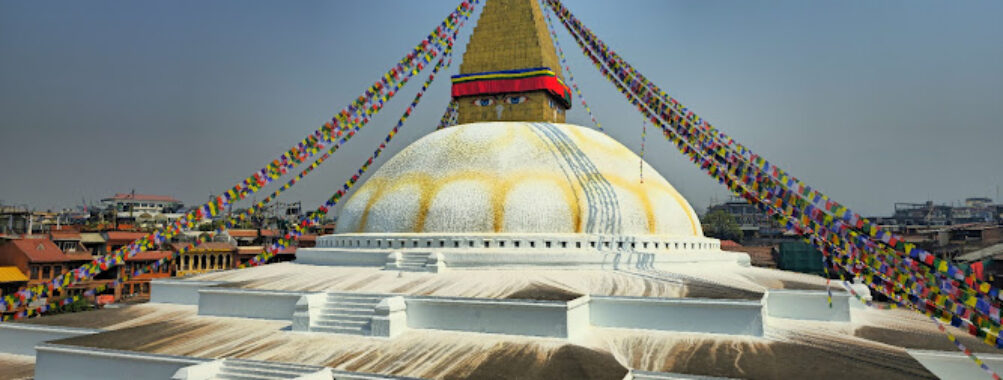
Buddha Stupa
Table of Contents There’s something quietly magnetic about the Buddha Stupa — that massive white dome rising above the hum of Kathmandu’s streets. It’s not just a monument; it’s a living, breathing space where devotion and daily life intertwine. The golden spire glints under the sun, prayer flags flutter in the breeze, and the rhythmic hum of mantras fills the air. You’ll see monks walking clockwise around the stupa, spinning prayer wheels, and locals stopping mid-commute to offer a quick bow. It’s all so natural, so human, that even if you’re not particularly spiritual, you can’t help but feel something stir inside. Over the years, I’ve been to my fair share of temples and shrines, but this one… it lingers. Maybe it’s the way the scent of incense mixes with the aroma of street food, or the way pigeons swoop over the dome like they own the place. There’s a sense of calm here that doesn’t demand silence but invites it. The stupa has weathered centuries — earthquakes, restorations, and countless footsteps — yet it stands with a kind of humble grace that’s hard to put into words. Some visitors come to meditate, others to take photos, and many just to soak in the atmosphere. Whatever your reason, it’s a place that meets you where you are. If you ask me, the early morning hours are pure magic. The air is crisp, locals are lighting butter lamps, and the first rays of sunlight catch the golden spire just right. It’s peaceful, almost meditative. Late afternoon is another great window — when the stupa glows under the setting sun and the prayer chants grow louder. The months between October and April are generally the best for clear skies and comfortable weather. Avoid heavy monsoon months if you can; the rain tends to make the pathways slippery, and the charm fades a bit when you’re dodging puddles. That said, there’s never really a “bad” time to visit. Even during the quieter seasons, there’s something beautiful about watching the locals go about their routines. And if you happen to be there during a Buddhist festival, you’re in for a treat — the stupa comes alive with lights, music, and an energy that’s hard to describe. Getting to the Buddha Stupa is surprisingly straightforward. From central Kathmandu, it’s just a short drive — though “short” in local terms can sometimes mean navigating through charmingly chaotic traffic. If you’re staying nearby, walking or cycling can be a pleasant option, especially in the cooler hours. Taxis are widely available and reasonably priced; just be sure to agree on the fare beforehand or use a ride-hailing app if you prefer a bit more predictability. For those who enjoy a bit of adventure, local buses and microvans also pass through the area. They’re not the most comfortable, but they do offer a slice of real Nepali life. Once you arrive, you’ll find that the stupa area is pedestrian-friendly — vehicles aren’t allowed too close, which makes strolling around feel safe and relaxed. Here’s the thing — visiting the Buddha Stupa isn’t just about sightseeing; it’s about slowing down. Take your time to walk clockwise around the dome, spin the prayer wheels, and maybe even sit quietly on one of the benches to watch life unfold around you. Don’t rush it. One of my favorite memories here was sipping tea on a rooftop as the prayer flags fluttered overhead, watching the sky shift from gold to deep blue. There’s something about that moment — the sound of bells, the smell of incense, the hum of life below — that stays with you long after you leave. And if you’re the kind of traveler who likes to dig deeper, spend some time talking to the locals. Many of the shopkeepers and monks are happy to share stories about the stupa’s history and its role in daily life. It’s these conversations that often make the trip more meaningful than any guidebook ever could. In short, the Buddha Stupa is more than a landmark — it’s an experience. Whether you come seeking peace, curiosity, or just a good photo, you’ll leave with something intangible, something quietly profound. Maybe that’s the real magic of this place. Description
Key Features
Best Time to Visit
How to Get There
Tips for Visiting
Location
Places to Stay Near Buddha Stupa
Find and Book a Tour
Explore More Travel Guides
No reviews found! Be the first to review!